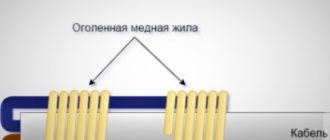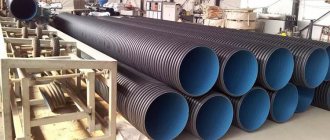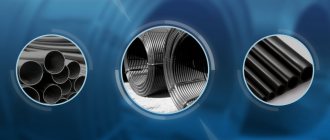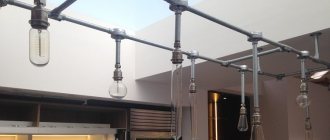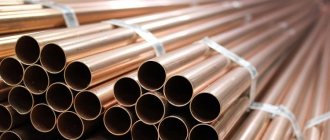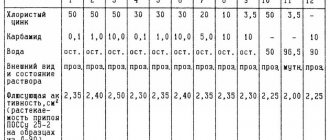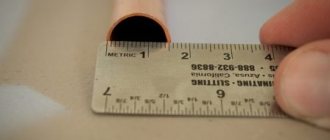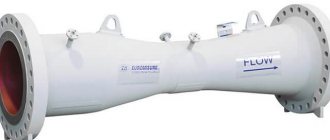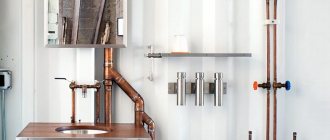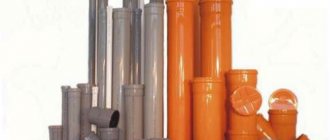The demand for domestic air conditioners and industrial air conditioning systems is increasing. This is due to the natural desire of people to create comfortable climatic conditions in the rooms where they spend most of their time. In turn, this significantly influenced the need for consumables used during the installation and installation of this type of equipment. One of these consumables, and the most common one, is a copper tube, which is used to install pipelines connecting all the blocks of the system.
Work progress
Judging by numerous consumer reviews, anyone can do this job, even with little soldering experience.
To get started, purchase a pipe cutter, a special bending machine and welding equipment. Some home craftsmen use a hacksaw instead of a pipe cutter. According to experts, this should not be done, since the quality of work will not be the same. A pipe bender can be universal (it works with different diameters) and specific (designed for pipes of a certain diameter). Next, you should buy aluminum tubes, cut them to the required length and bend them on a bending machine. After preparing the pipes, start cutting the fittings and connect everything into one system. Before connecting, clean the tubes thoroughly using sandpaper or a wire brush. If grease, paint or soil remains on the products, the adhesion of the metal to the solder will be worse. If you want to connect two tubes, insert them into each other so that there is a small gap (0.2 cm), which will later be filled with molten solder. After completing these steps, you can proceed directly to the soldering itself.
Installation
You will need
- Set of wrenches;
- Gas key;
- Pipe cutter (we do not recommend using a hacksaw!);
- pipe flaring tool;
- File;
- Sandpaper;
- A tool for bending pipes (you can bend it manually, but in this case creases often form);
- FUM tape.
How the work is done
The work must be performed AFTER installation of the outdoor unit and BEFORE installation of the indoor unit.
First you need to measure the distance along the wall from the indoor to the outdoor unit and add 50-60 cm to the resulting figure. This way you will get the total length of the pipeline that you need to lay. If you are not sure about the calculations, add a meter. A supply of pipes will never be superfluous.
If you bought insulated tubes, remove some of the insulation at the ends. If the pipes are not insulated, this work must be done before laying communications. Thermal insulation of copper pipes is required. Without proper insulation, the device will work inefficiently, while consuming more electricity than it actually needs.
Pipes for air conditioners made of copper - sizes, diameters
Currently, copper pipe manufacturers offer a wide range of products that differ in various geometric parameters. The main characteristic for choosing the required product is its diameter. It is this indicator that determines how quickly the refrigerant will circulate through the air conditioning system. In addition, a competent choice of tube cross-section makes it possible to significantly reduce pressure losses in air-cooling units.
In construction markets and stores it will not be difficult to find copper pipes with a cross-section ranging from 6 to 100 millimeters. For air conditioning systems, the following product size standards are usually used:
- 3/8 inch (9.52 millimeters).
- 1/4 inch (6.35 millimeters).
- 3/4 inch (19.05 millimeters).
- 5/8 inch (15.88 millimeters).
- 1/2 inch (12.7 millimeters).
The choice of the optimal pipe width depends on the performance of the cooling system or, in simple terms, its power. The higher the performance of the air conditioner, the more refrigerant will circulate through the pipes. Accordingly, for more powerful equipment you need to choose wide designs. If you are installing a small air conditioner to cool a room, then small-diameter products are suitable for you.
The standard wall thickness of copper pipes does not exceed 0.7 millimeters. The length of the products can be completely different, although most manufacturing companies cut the products into two-meter lengths before selling them to the buyer, and then pack them into coils of 25, 15 or 50 meters. Note that at the ends of the pipes, two-meter parts of the pipes have plastic plugs designed to protect the pipes from small debris and moisture getting into them during transportation.
Tips for choosing
The working medium in air conditioners is freon, which is based on fluorocarbons. If the system is damaged and released into the air, freon reacts with water to form the strongest acid - hydrofluoric, or hydrofluoric. If freon comes in direct contact with the skin, you can get frostbite and chemical burns. Therefore, the quality of the air conditioning refrigeration system is of paramount importance.
Conclusion: you should buy copper products only in construction supermarkets, with a receipt and certificate. Products made in Germany have the best quality. But other manufacturers, including domestic ones, also produce quite high-quality products. Price difference. So the choice is yours.
The diameter of the tubes is indicated in the air conditioner passport.
It doesn’t matter whether you choose an annealed or unannealed tube, both are strong enough for use in climate control technology. But if you install the system yourself, it is better to choose an annealed air conditioning pipe - its advantage is flexibility - you can buy a piece of the required length and bend it in the right places, you do not have to connect short pieces of rods together.
Technical characteristics, diameter and dimensions of pipes
Copper pipes for air conditioning are selected according to their cross-section. The speed of refrigerant circulation depends on their diameter. In addition, with a correctly selected cross-section, the likelihood of a pressure drop in the climate control equipment units is eliminated.
Copper tubes can have a diameter ranging from 6-26.7 mm. This gap fits 26 standard sizes. The following pipes are suitable for use in air conditioning systems: 19.05 mm, 6.35 mm, 12.7, as well as 15.88 and 9.52 mm. Typically, the section is indicated in inches, which is respectively equal to ½, ¼, ¾, 5/8 and 3/8 inches. The optimal pipeline wall thickness is 0.7 mm, but in principle this parameter can be in the range of 0.5-3 mm. Pipelines are sold in sections of 2 meters or in coils of 50, 25 or 15 meters.
The exact cross-section and length of the pipeline depends on the design features of the air conditioner, the presence of fittings and pipes of a certain diameter, as well as the nuances of the location of the external and internal units. Typically, tubes with a cross section of 6-16 mm are used.
Copper pipe insulation
Insulated copper lines are available for sale. The protective layer will prevent the circulating refrigerant from overheating or freezing under certain operating conditions.
The protective layer is made of foam rubber or a special type of polyethylene. This is a hollow tube about two meters long. The material can be used in the temperature range -150°С…+150°С. Since the thermal conductivity of copper is 0.394 kW/mK, and the same parameter of the insulating coating is only 36 mW/mK, the protective layer helps maintain the temperature of the coolant.
Thanks to the use of isolated freon lines, refrigerant consumption is significantly reduced, and this entails a reduction in electricity consumption. Thin copper walls of pipelines cannot prevent heat loss as well as insulation.
Advantages and disadvantages of copper pipes for air conditioners
Freon lines made of copper have many positive qualities:
- Corrosion resistance and increased strength are the main advantages of the material.
- Transportation and installation of the pipeline is simple and quick due to the low weight of the element.
- The ductility and flexibility of annealed pipes are an undeniable advantage.
- The antibacterial characteristics of the metal are also of no small importance.
- The smooth inner surface of the line reliably protects against blockages.
- The material easily tolerates temperature changes and its extreme values, increased pressure and vibration effects.
- Copper is resistant to ultraviolet rays and does not change its technical characteristics.
- Pipes are easy to cut, maintaining the original clearance of the line.
Since cutting a copper tube using the traditional method produces chips that can get into the pipeline and damage the HVAC equipment, do not use conventional cutting tools. Soldering or fittings are used to connect individual elements.
Due to the low melting point of solder, a conventional gas torch is used when connecting copper pipelines. To eliminate the possibility of freon leakage, it is better to choose the capillary method in high temperature conditions.
How to isolate the route?
To solve the problem, you can use materials from different manufacturers. The most relevant is the following thermal insulation:
K-FLEX insulation is a flexible elastic material. It is made from special raw materials - closed-cell foam rubber. The thermophysical and operational characteristics of this thermal insulation are of high quality. Low thermal conductivity and vapor permeability make the use of this material very convenient. The insulation is durable. It has a high level of sanitary, fire and corrosion safety.
The products are considered one of the best on the market. Its manufacturer has an impeccable reputation among consumers. K-FLEX thermal insulation is one of the most reliable and effective. It is ideal for insulating air conditioner pipes.
Energoflex insulation can also be used to solve the problem under consideration. The range of products of this brand is very wide. The company produces thermal insulation from foamed polymers, especially for air conditioning systems. The material is characterized by a closed-cell surface. It provides a decent level of moisture protection and vapor permeability.
Flux
Due to the specific chemical structure of aluminum, you may encounter difficulties during soldering. The reason is that aluminum is a fairly reactive metal.
This means that the reagents can be different chemicals. When this non-ferrous metal interacts with oxygen, the formation of a very thin and at the same time unusually strong oxide film is observed on the surface of the product. Due to the fact that the properties of aluminum and its oxide are completely opposite, the formation of this film should be completely eliminated. For this purpose you will need flux.
With the help of this auxiliary material, oxides are removed from the solder and the surface of the product being soldered. In addition, flux prevents their formation. Judging by the reviews, the best brand is F-64 with 40% active fluorine content. After work, the surface to be soldered must be washed. Flux A-214 is considered a universal no-clean agent with a melting point from 150 to 400 degrees. After work, its residues can be easily removed with a regular napkin, which is pre-moistened with alcohol.
Rules for selecting pipes for various systems
Each pipeline has special characteristics, so when choosing pipes, all parameters should be taken into account.
Selection of pipes for water supply and wastewater systems
For the water supply system, round pipes with a diameter of 8 mm - 22 mm are mainly used. The wall thickness of such pipes does not exceed 1 mm.
To determine the optimal outer diameter of copper pipes for an indoor water supply system, experts use a complex mathematical formula. A simpler way to determine the diameter is as follows:
- if the pressure in the water supply system exceeds 3 atmospheres, then the minimum diameter is 8 mm;
- if more than one water tap is connected to the collector, then the minimum pipe diameter is 15 mm;
- if the water supply system is connected from a central collector, then the first connecting copper pipe with a diameter of 20 mm is installed;
- if water is supplied to the system under a pressure of less than 2 atmospheres, then the diameter of the installed pipes increases accordingly by one standard size, that is, instead of 8 mm, 10 mm should be used and so on (table of standard sizes below);
- if the length of a private water supply from the point of entry to the points of consumption is more than 20 m, then in order to obtain normal water pressure in all devices it is necessary to increase the nominal sizes of the pipes by one standard size.
Standard Typical Parameters of Copper Pipe
For drainage systems, pipes with a diameter of 32 mm to 42 mm are used.
Selection of pipes for the heating system
To calculate the diameter of the pipe in heating systems, the following parameters are used:
- pipeline layout;
- pipe resistance coefficient;
- speed of coolant movement in the system;
- diameters of inlet and outlet holes.
It is almost impossible to determine the diameter of the pipes on your own due to the complexity of the calculations, so to determine the parameter you can use the table below or the calculation method.
Calculation of the optimal pipe diameter for the heating system
The diameter of the pipe in the heating system cannot be greater than the outlet diameter of the heating equipment.
Copper pipes in the heating system are described in detail in the video.
Selection of pipes for gas supply
Depending on the pressure in the system, gas pipelines are divided into the following types:
- with low pressure (less than 0.005 MPa);
- with average pressure (0.005 MPa - 0.3 MPa);
- with high pressure (more than 0.3 MPa).
Copper pipes are allowed to be used exclusively for the installation of gas pipelines with low and medium pressure, that is, for domestic gas pipelines.
According to regulatory documents, copper pipes are used for pipeline laying:
- with a diameter of no more than 15.9 cm;
- wall thickness up to 5 mm.
A more accurate calculation of the diameter is made exclusively by specialists.
Varieties
Copper is resistant to caustic environments. Therefore, pipelines for moving freon are made from such metal. This is a hydrocarbon substance containing fluorine, belonging to the group of freons. It is the working medium in air conditioning systems.
To move refrigerant in liquid and gaseous states between the outdoor and indoor units, one of two types of copper pipes are used:
- Annealed with good flexibility, withstand high pressure without surface deformation. They are supplied in coils of 15, 25 or 50 m. Pipelines made from them have a strength of 210,000-220,000 kPa and an elongation at break of 50% to 60%.
- Unannealed, in the form of rods with a minimum length of 3 or 5 m. They are characterized by a strength of 280,000-300,000 kPa and an elongation at break of 10% to 15%.
The type of copper pipe is selected depending on the type of air conditioning system. When installing split systems, annealed ones are used.
Installation
The ends of copper pipes are closed at the factory with plastic plugs. This protects the internal space from a humid environment, debris, dust particles and other contaminants. It is better to buy only copper pipes with plastic plugs. The smallest debris inside can damage the climate control equipment.
How to solder copper pipes for refrigeration systems and connecting an air conditioner?
The article briefly describes how to properly solder copper pipes and what basic tools you will need for this.
Soldering copper pipes is not a difficult skill. Even a beginner can learn how to solder to prevent seams from leaking within 30 minutes. The process is very simple if you follow a few basic rules. In this article we will show you how to solder copper quickly and easily.
Soldering copper pipes for connecting an air conditioner
In this article, we will look at the basic steps for soldering the copper pipe used in air conditioning connections in most homes. You don't need any special skills to successfully solder copper. You can easily solder joints tightly on the first try, but you can also make mistakes
We'll show you how to avoid them, as well as warn you about simple but important safety precautions that will protect you from burns and keep your home safe from fire.
You will need: solder (in the form of special rods or wire), a steel brush (for cleaning pipes and fittings), flux paste, a brush for applying flux paste, sandpaper for cleaning the surface, a small propane torch (preferably with a built-in igniter), heat-resistant gasket, copper pipe, fittings.
The main soldering tool can be called a propane torch, which consists of a cylinder, a gas supply regulator and a tip (nozzle). To get started, open the fuel valve regulator and ignite the tip. For easier ignition, we recommend a regulator that has a built-in igniter. If you buy the simple version, also buy a special lighter. Squeezing the wire with your hands produces sparks that ignite the gas.
Prepare the pipes; if you need to cut them, you can easily do this using pipe cutters. Afterwards, be sure to check the cut area to see if there are any burrs or dents. If burrs are found, they must be removed and cleaned. In addition, it is necessary to clean the soldering area on the pipe with sandpaper to a copper shine on the outer surface, and clean it on the inside with a brush. Next, you need to apply flux paste with a brush outside and inside the joints of the pipe that will eventually be connected.
If all of the above points have been completed, you can start soldering. Light the burner and heat it up
As a precaution, it is necessary to wear fire-resistant gloves, clothing and a mask to avoid accidental burns. When the burner is hot, you need to bring it to the tube and hold it for 15-20 seconds.
Solder must be applied along the edge of the joints; it is not necessary to apply it along the entire diameter, since it will be absorbed into the joint itself.
After soldering is completed, it is necessary to check the quality. To do this, you can simply run water through the pipe, after allowing the pipe to cool, since a sharp temperature change can simply crack it.
Advantages of copper products
Due to their performance properties, copper pipes are widely used for transporting various liquids. Among the advantages of such products are:
- Plasticity and strength. Copper products have high strength and ductility. At low temperatures, these properties increase significantly. This makes it possible to use a copper pipeline for transporting non-freezing liquids.
- Resistant to sudden temperature changes. Copper pipes do not lose their performance properties at extreme temperatures. This also applies to high blood pressure. Such pipes can withstand a load of 400 atmospheres.
- Slight thermal expansion.
- The versatility of the material. For the construction of one or another utility line, you can use pipes with a small wall thickness. So, for example, if we take steel or plastic analogues, then to solve a similar problem we needed products whose wall thickness was several times greater.
- Resistant to chlorine and other chemicals that may be contained in the transport fluid. Upon contact with copper, an oxide is formed, which extends the life of the product.
- Copper pipes are not afraid of ultraviolet rays, chemically aggressive substances and corrosion. Thanks to these properties, the service life of the pipeline can reach 100 years or more.
- Copper inhibits the development of bacteria, which makes the pipeline safe.
- The inner walls of copper products have a smooth surface. Thanks to this, pipes with a small diameter can be used to construct the pipeline. At the same time, throughput is at a high level.
- Dismantled copper pipes can be reused to construct a new heating or water supply system pipeline.
- Copper pipes have an attractive appearance. This makes it possible to abandon the installation of decorative boxes. The products themselves can be used as a decorative element.
Due to the presence of such advantages, copper pipes are especially popular among professionals and are used in various fields.
Distinctive properties
In addition, copper pipes for air conditioning can withstand high pressure. So that they can have such strength, an annealing procedure is performed. That is, metal processing at high temperatures, up to +700 degrees Celsius.
After this procedure, the natural properties of copper are somewhat transformed. Copper pipe for air conditioners becomes less tensile strength, but it acquires ductility and begins to stretch perfectly. It will become twice as long before it breaks, and bends easily at a certain angle. This makes it possible to give this element any configuration, which greatly simplifies the installation procedure.
The strength of the annealed pipe is 220 MPa. Its production is regulated by GOST R52318-2005, according to which the composition of copper should not contain impurities greater than 0.1%. Seamless options are the most valuable. Their walls are very smooth, which increases the throughput of the pipeline. And the relatively low weight gives some advantage during installation and operation. By the way, copper pipes for air conditioners can last longer than the air conditioner itself, several decades.
Diameters of copper pipes in inches and millimeters: size conversion
Outer and inner diameters are the main parameters of pipes. The length of the pipeline, its operating pressure, parameters of the transported medium and general functionality depend on these indicators. Since products made of iron and non-ferrous metals are products standardized by GOST, the diameters of copper pipes are expressed in inches and millimeters
It is important to be able to translate these quantities in order to eliminate errors when joining. Especially when it comes to joining sections of a pipeline made of a different material, since each type of pipe is produced according to its own standards
Copper pipes are available in different sizes, the diameter of the products is indicated in inches or millimeters
What is important to know about pipe parameters?
Length and diameter are simple parameters expressed in digital equivalents to make it easier to measure and enter the value into formulas. But in reality, there are several parameters for measuring the thickness of pipes, and accuracy is needed everywhere.
This is interesting! Discrepancies in measurements arose due to the introduction of copper pipes into European construction technologies from the mid-twentieth century. Then, in our territory, the main standard was determined in millimeters - for iron products, which are widely used even today. Domestic apartment buildings are equipped mainly with steel water supply.
In Europe, private households with copper communications are more popular. They are the most durable, corrosion resistant, but have a high cost. Seamless copper products are gradually gaining their market segment; they are also produced in accordance with GOST. They are used not only for plumbing communications, but also to ensure the operation of:
- split systems;
- solar panels;
- refrigeration units;
- autonomous heating;
- parts for mechanical engineering.
Different pipeline segments use pipes of different cross-sections, and it is important to know what diameter is suitable for a particular purpose
Basic quantities for measuring pipes
Experts distinguish the diameter of copper pipes:
There are also such general concepts as “nominal diameter” and “wall thickness”. Without indicating the dimensions, they say that the product is “thick-walled” or “thin-walled.” All diameters of copper pipes must be indicated in their markings - in inches and millimeters.
- The thickness of the walls of the product, the value is indicated in “mm”, the parameters are related to the volume of the passing substance and its pressure. The difference between the inner and outer diameter remains a significant indicator.
- For high-quality joining of the pipeline through fittings, the conditional bore is important - the internal clearance of the product; millimeters are also used to designate it. On imported products made of non-ferrous metals, it is indicated in inches, which requires conversion to “our” values.
- Internal diameter is the main indicator of pipeline permeability (mm), used for calculations in formulas.
- Outer diameter – important for the classification of products (large, medium and small), indicated in “mm” in all tables.
- Nominal diameter is approximately the same as “nominal diameter”, but is marked with an exact value.
Using a ruler you can determine the pipe size very approximately
Attention! Approximate values are given by a tape measure or measuring tape; exact values are given by calipers and measuring equipment. Today, the materials from which pipes for highways and household water supply systems are produced are limited to a small list:
Today, the materials from which pipes for highways and household water supply systems are produced are limited to a small list:
- steel;
- plastic, metal-plastic;
- aluminum, copper, other light alloys.
Some copper pipe sizes are designated in inches, such as "inch" or "half-inch." This means that the internal diameter is expressed as 1 inch or ½ inch - about 25.4mm and 12.7mm
Specialists in laying highways pay attention to these values in order to select the dimensions for a copper pipe:
Pipe fittings also have dimensions, they are indicated on the outside of the part
How to convert inches to millimeters
Metric parameters are most often used for external measurements of the diameters of copper pipes, and inches for internal ones. Use tables to convert inches to millimeters.
Size in “mm” is converted to “inches”, rounded up
1 inch is 25.4 mm, but rough rounding results in an error, which is important to consider when choosing a product range
Converting inch sizes to metric ones is a simple procedure, but it requires care. A discrepancy between the parameters of the parts of the future pipeline will deprive the technician of the opportunity to carry out installation, or the joints will be leaky, which will make it impossible to use the pipeline.
Manufacturing methods and technologies
According to GOST, copper and brass pipes are manufactured using two technological operations - rolling and pressing, followed by welding of the joints. Round pipes are produced in one or another way. Copper square pipe is produced mainly by pressing method with longitudinal seam welding.
Rolling production
Rolled pipes are produced only by cold deformation. After all, copper is a very ductile metal that can be rolled between rollers even without preheating. As a result, a workpiece is simply put on the rollers of a rolling mill - a sleeve, which is rolled out to the required diameter.
At the final processing stage, rolled tubes are divided into annealed and unannealed products. The latter option does not involve heat treatment of the pipe after rolling, so unannealed pipes are much stronger than their treated counterparts. After all, the outer and inner layers of such products will be much denser than ordinary copper due to the deformation of the metal crystal lattice on rolling rolls.
Thus, annealing separates cold-deformed pipes into:
- hard,
- semi-rigid,
- soft.
Welded production
Pressed pipes are made on special machines from sheet copper. A dimensional blank is cut out of the sheet and fed to the forming rollers of the press. After pressing, the sheet takes the shape of a round, oval or square pipe, and the joining seam is welded in an inert gas environment.
At the finish, the welded pipe is passed through calibrating rollers, which level the profile of the product and correct longitudinal deformation.
In addition, at the final stage, both rolled and extruded pipes can undergo another type of processing - chrome plating. As a result, the manufacturer gets a completely new type of product - a chrome-plated copper pipe, through which even very concentrated acids can be pumped.
Speaking about production technology, it should be noted that not only the price and characteristics of the product (seamless pipes are stronger), but also the dimensions of the final product will depend on the chosen manufacturing method.
Production
Copper is a very ductile material, and copper pipes are made without welding.
Industrial methods for the production of seamless pipes: drawing, rolling, pressing, combined methods. Very rarely, thick-walled products are produced by welding. In practice, rolling and drawing are most often used.
Large-sized products are produced in several stages with intermediate heat treatment. After manufacturing, the pipes are necessarily annealed (heated, held for a certain time and cooled together with the furnace). After annealing, the structural stresses that appeared as a result of manufacturing disappear in the metal.
Famous manufacturers of air conditioning tubes
Leading manufacturers of copper components for air conditioning systems guarantee the quality and performance of their products in accordance with current standards. These include the following manufacturing companies:
- Majdanpek. The manufacturer's specialization includes the production of installation and industrial products. The products are made from deoxidized high-phosphorus copper C12200 or Cu-DHP. The share of metal in the elements is 99.9% - guaranteed; and the share of phosphorus is in the range of 0.015-0.04%. The diameter (external) varies between 5-75 mm, wall thickness - 0.35-2.5 mm.
- Wieland. Included in the list of leading manufacturers of special elements. Cuprofrio is a series of air conditioning pipes. Products are manufactured in accordance with standard EN 12735. The diameter of products is limited to 6-104 mm. There are plugs at the ends of the pipes, the inner surface of which is absolutely dry and clean. Such products are easy to prepare for installation.
- Halcor. Also among the largest manufacturers of these products, numbering 18 companies and 8 manufacturing plants. The quality of the elements is confirmed by certificates from organizations such as NSF and ZIK, as well as AENOR, GOST, NSAI and BSI. The products are characterized by improved dimensional stability, low thermal expansion and chemical inertness towards working substances R134A, R404A, R407C, R410A.
- Sevojno. The manufacturer specializes in the production of copper products for water and gas in accordance with the standards stipulated by the EN 1057 standard. Copper pipes for air conditioning and refrigeration systems are manufactured in accordance with the standards of the EN 12735 standard. The share of copper and phosphorus in the content of products accounts for the same percentage as in products Majdanpek.
Also among the most common manufacturers of the products in question are the Austrian Frigotek, the Italian FOMA, as well as Hetcu, KME (Germany), CYPORI OY (Finland).
Price difference
The cost of copper is constantly growing and depends on the exchange rate. The decrease in the quantity and quality of the mined metal, its increasing shortage, contribute to the constant rise in prices for copper products. Therefore, the issue of finding an alternative that can replace copper in the production of air conditioning systems is one of the most pressing.
Aluminum has only recently begun to be used in cryogenic equipment (refrigerators, car air conditioners). The cost is stable and almost three times cheaper than copper; there are large reserves in nature. This opens up great prospects for the industrial production of products from this metal.
Diameter table
The small cross-section allows you to avoid making large holes in the wall of the building when pulling. Depending on the power of the unit, the diameter varies. The list of diameters produced is given below:
| Diameters in millimeters | In inches |
| 6.35 | 1/4 |
| 9.52 | 3/8 |
| 12.70 | 1/2 |
| 15.88 | 5/8 |
| 19.05 | 3/4 |
The higher the power of the air conditioner declared by the manufacturer, the greater the amount of refrigerant the tubes must pass through. And the distance between external and internal blocks varies. Therefore, the sizes of copper pipes for air conditioners also differ. This refers to their length. Typically, copper tubes are supplied in coils of 15 meters; 25 and 50 meters.
But some manufacturers cut them at the factory into rods 2 meters long, installing plastic plugs at their ends to prevent debris and moisture from getting inside. If the person who bought the air conditioner wants to install it himself, he will not need a whole coil of pipe. Coves are used by specialists who install air conditioners on a large scale.
As with any external engineering systems, thermal insulation is required. This is necessary to avoid condensation accumulation, overheating or freezing of the transported liquid or gas. Typically, special protection made of foamed, non-porous rubber or polyethylene is used for these purposes. It is produced in the form of two-meter black tubes.
Their thermal conductivity is l (0°C) = 0.036 W/mK. Insulation for copper air conditioning pipes can protect them at temperatures ranging from -150°C to +150°C. In addition, the very thin walls of the copper pipeline can lose temperature, which sharply increases the consumption of electricity and refrigerant during operation of the split system. Typically, thermal insulation is sold as a kit. If not, you need to purchase it separately and be sure to install it.
During installation, metal cutting tools are usually not used. This prevents chips generated during cutting from entering the cooling system. The shavings may well clog the hole in the tube and damage the air conditioner. That is why two main methods of fastening are used: connection using fittings and soldering the copper pipes of the air conditioner to each other. Solder has a low melting point, which makes it possible to use a conventional gas torch when joining tubes.
Copper is by no means a cheap metal; it is used only where such costs are justified. This is not only the installation of refrigeration and air conditioning systems. This metal, classified as non-ferrous, practically does not oxidize. It is not afraid of contact with other metals, and therefore is widely used in the chemical and food industries, as well as in mechanical engineering.
When designating products, for example, a copper pipe with a diameter of 8 mm, we mean one of the main parameters of pipes - the outer diameter. Many properties of the future pipeline (working pressure, length, etc.) depend on this indicator. It is necessary to be able to operate with quantities such as inches and millimeters, since according to GOST, they are the main measures of this parameter. The digital equivalent of the values of parameters such as length and diameter is often used in formulas for various calculations.
Today, we can distinguish the following diameters of copper pipes, which, one way or another, appear in the tables:
- External;
- Interior;
- Nominal.
The very need for comparative tables with diameters arose due to different standards in Russia and Europe (All products related to copper pipes: https://rdmetall.ru/cvetmet/mednyj-prokat/mednye-truby/). Since most pipe manufacturers are foreign, the characteristics use inches, while in our territory they operate with mm values, see.
| Ø, inch | Outer diameter + wall thickness, mm |
| 1/4 | 6.35+0.76 |
| 3/8 | 9.52+0.81 |
| 1/2 | 12.7+0.81 |
| 5/8 | 15.9+0.90 |
| 3/4 | 19.05+0.89 |
| 7/8 | 22.23+1.14 |
| 1 | 25.4+1.14 |
| 1 1/8 | 28.58+1.27 |
| 1 3/8 | 34.93+1.40 |
| 1 5/8 | 41.27+1.53 |
| 2 1/8 | 53.98+1.78 |
| 2 5/8 | 66.68+2.03 |
| 3 1/8 | 79.39+2.30 |
| 3 5/8 | 92.08+2.54 |
| 4 1/8 | 104.74+2.80 |
Benefits of use
- The aluminum pipe for installing air conditioners bends well, without creases, and requires less effort. The same tools are used as when working with copper.
- low melting point. This makes soldering of elements faster (4 times), significantly saving time, gas, and soldering rods. There is no need for additional equipment, turning seams, etc. The welding seams are much stronger than the metal itself. The blowtorch and gas are the same as for copper.
- due to greater softness, less effort is spent on pipe flaring, the set of tools is the same. The strength of the pipes is ensured by their greater thickness.
- expansion up to 30%.
- thermal conductivity characteristics are almost two times lower than those of copper. This contributes to lower condensation of pipes in the system.
- corrosion resistance is higher, the oxidation reaction rate is lower. This will keep the inside of the cryogenic system pipes clean for a longer time.
- wide temperature range from -80⁰ C to 120⁰ C.
- aluminum pipe for installing air conditioners is lighter, so it can be delivered in 50- and 100-meter coils. This reduces the amount of waste, welding seams and reduces the likelihood of leaks.
Calculation of pressure in a copper pipe
Designing heating or plumbing systems is an important process during which it is determined how much pressure a copper pipe can hold. It is created by modern pumps, the range of which is quite extensive. Knowing the design pressure, it is easier to select a unit with the required characteristics.
Calculations will require data on the physical characteristics of the material, which are described above. This refers to the coefficient of thermal expansion, weight, and melting point. By plugging the data into an online calculator, you can easily calculate the required value.
Let's consider four types of pressure in a copper pipe:
- operational – measured under standard system operating conditions;
- trial – determined during system testing during installation;
- conditional - measured at a carrier temperature of 20 degrees;
- calculated - determined in the process of designing engineering communications.
The water meter is a practical unit of measurement of water pressure. What does this indicator mean? One atmosphere - this pressure is observed in the lower part of a pipe with water 10 meters high.
Working pressure is calculated using the formula:
Pressure loss is taken into account during pipeline design. They are calculated using the formula:
Thus, the design pressure in the pipeline is determined as follows:
Here μ is the friction coefficient, l is the length of the line, d is the internal diameter of the pipe, SG is the density of the liquid, p is the pressure loss. The required indicators can be determined from the tables.
Let’s say 15x1 is an indicator of the diameter and thickness of the product. We have a pipe weighing 0.391 kg/m and a capacity of 0.133 liter/meter. The working pressure for it is 5.7 MPa.
Just find an online calculator and enter the appropriate data. The calculation will be performed automatically.
